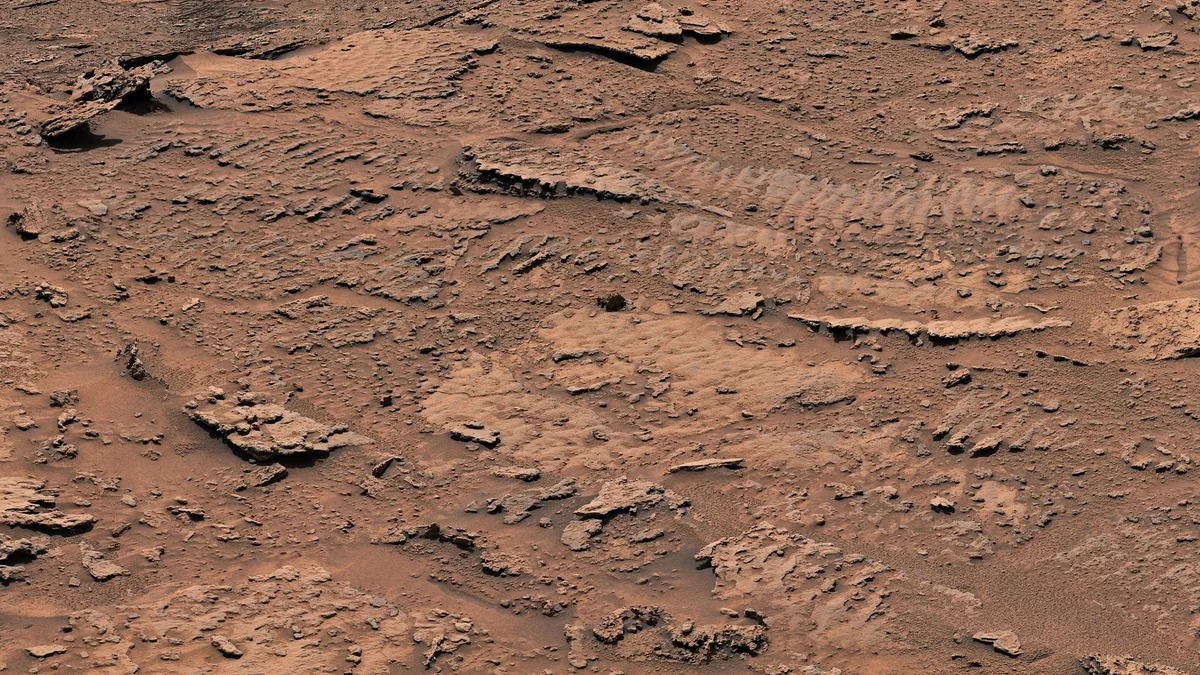NASA’s Curiosity rover has been recording data in the Gale Crater on Mars for more than 10 years. This is a veteran of the Red Planet, but there are still many surprises hidden on Mars. One of these surprises was found at the bottom of an ancient lake. The rover documented a landscape with amazing rocks, which showed signs of the presence of water in the ancient past of the planet.

“Billions of years ago, waves on the surface of a shallow lake swayed sediment at the bottom, eventually forming ripples remaining in the rock,” NASA said in a statement.
On the way to the goal
Curiosity is moving towards the lower levels of the crater’s huge central mountain, Mount Sharp. One of the main goals of the rover was to find out if this territory could ever be useful for microbes to live. Understanding the history of water in the crater is an important component of the mission.
The mountain acts as a timeline with the old layers at the bottom and the young ones at the top. Rocks with ripples are located in an area called the marker strip, where there is a layer of dark rock. Curiosity tried to drill tempting rocks in this area to study them more closely, but the rock turned out to be incredibly hard, and thwarted all attempts by the rover to collect it. The team is still hoping to find softer rock to drill.

Ancient ripples are not the only thing that has attracted the attention of scientists. Curiosity also noticed some rocks with repeating layers on them. The formation of these rock layers is still being investigated, but it may be related to ancient dust storms.
“The rhythmic layers tell us about the history of the transition from wet to dry climate on Mars. The ancient climate of Mars had an amazing complexity, like the Earth,” say scientists from NASA.
Curiosity and Perseverance
Curiosity’s fellow rover Perseverance is also studying the remains of an ancient lake in the Jezero crater. NASA hopes Perseverance will build on Curiosity’s work and push it even further with a planned sample return mission to Mars. NASA hopes Perseverance will build on Curiosity’s work and push it even further with the planned sample return mission. If all goes well, in the 2030s we may have real rock samples from Jezero to study on Earth. Perhaps we will finally get clearer answers about the potential existence of life on Mars long ago.
Earlier we reported on how Curiosity discovered an alien rock.
According to NASA
Follow us on Twitter to get the most interesting space news in time
https://twitter.com/ust_magazine

